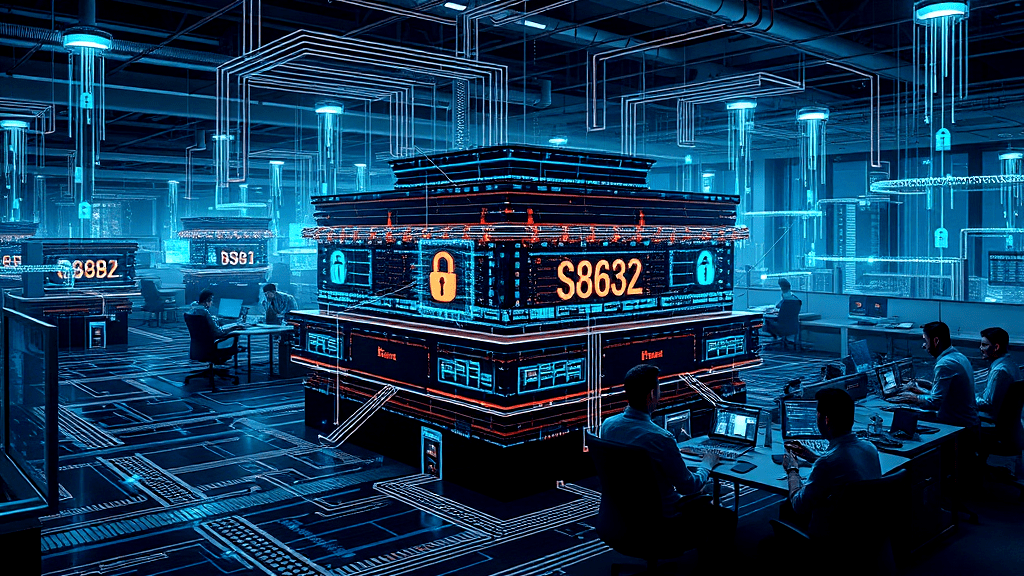Infostealer Malware and Its Impact
Defining Infostealer Malware
Unpacking the nature of stealer malware reveals a formidable adversary in the cyber realm. Infostealers, a sinister breed of malicious programs, relentlessly hunt for sensitive information, infiltrating systems with stealth and precision. Once malware infected technology is compromised, it silently pilfers data, from financial credentials to corporate secrets, leaving victims unaware until it’s too late. The infostealer lifecycle is a chilling tale of infection, exploitation, and devastation.
Prominent infostealer families like RedLine and Vidar demonstrate the evolving threat that organizations face. Victims often discover the aftermath when their private information surfaces in underground markets. Imagine a corporate network breached, where stolen corporate credentials pave the way for larger security incidents.
In the battle against this infostealer epidemic, real-time intelligence offers a beacon of hope. Flashpoint, for instance, monitors dark web activities to alert organizations of emerging threats, enabling them to protect infected machines preemptively. This proactive approach underscores the importance of staying one step (out of breath, but vigilant) in this relentless cyber race.
Key Characteristics of Infostealers
The qualities of infostealers reveal their role as stealthy predators in the cyber ecosystem. These malicious programs are cunning, often incorporating multiple payloads to retrieve sensitive information. Infostealer malware can execute tasks like keylogging and clipboard hijacking with alarming precision.
A significant challenge lies in their use of advanced stealth tactics. This makes detection a game of cat and mouse, leaving infected machines vulnerable. Infostealers are like digital pickpockets, adept at pilfering without leaving a trace. The stakes are high for organizations, as compromised corporate credentials can lead to catastrophic breaches.
Imagine a scenario where infostealer malware infected your system, quietly siphoning off your most sensitive details. You’d never know until the damage was done. Understanding this risk requires a comprehensive guide to tackling these threats. Organizations must prioritize cybersecurity measures, enabling them to fend off the insidious infostealer epidemic.
Yet, hope isn’t lost! By embracing proactive strategies, such as real-time threat intelligence, companies can reclaim control. Flashpoint and similar solutions offer valuable insights, providing the upper hand in this ongoing battle against cybercrime.
How Infostealer Malware Operates
Understanding how stealer malware carries out its mission involves examining its infiltration processes. Once infostealer malware sneaks into a system, it infiltrates various applications to harvest sensitive information. This data is stealthily extracted and sent to external servers. The journey of information from the moment a machine becomes malware infected to its eventual exploitation resembles a digital heist—silent yet devastating.
Infected machines become treasure troves for cybercriminals, who sell the stolen data in underground markets. The infostealer lifecycle, from infection via phishing or malicious downloads to ultimate exploitation, is a sophisticated chain of events. The cyber underworld thrives on this exchange, making an infostealer epidemic a real threat. Prominent infostealer families, like RedLine and Vidar, refine techniques to enhance their reach and avoid detection, leaving organizations scrambling to protect corporate credentials.
Leveraging tools like Flashpoint can be a game-changer. Their intelligence solutions offer a fighting chance by providing insights into cybercriminal activities. With the right strategies, organizations can better safeguard themselves against this persistent threat.

Infostealer Lifecycle: From Infection to Exploitation
The journey of infostealer malware from infiltration to exploitation paints a vivid picture of digital thievery. Once these stealthy operators invade systems, they lie low, collecting valuable data. The harvested information, often corporate credentials, finds its way to the cybercriminal’s cache. Infected machines become gold mines, fueling a bustling underground economy. This lifecycle, from malware infection to data exploitation, demands urgent attention.
The trail of destruction left by infostealer malware infected devices stretches far and wide. Organizations face the daunting task of shielding themselves against this threat. The growing sophistication of these attacks leaves no room for complacency. Solutions like Flashpoint offer crucial insights, helping organizations anticipate the next move in this cat-and-mouse game. As infostealers continue to evolve, the stakes get higher. Verizon’s Data Breach Investigations Report reveals compelling statistics about the prevalence of such threats. The report underscores the critical need for robust defense mechanisms. The battle against infostealers is relentless, and vigilance is the key to survival in this high-stakes cyber arena.
Prominent Infostealer Families to Watch
Prominent infostealer families have become the cyber equivalent of a ticking time bomb. RedLine, Vidar, and Lumma stand out, wreaking havoc with their advanced capabilities. Each thrives by leveraging unique techniques, slipping through defenses like a thief in the night. These nefarious actors adapt quickly, a testament to their resilience in the infostealer lifecycle.
RedLine, for instance, is known for its focus on corporate credentials, exploiting vulnerabilities with surgical precision. Vidar, meanwhile, casts a wider net, targeting multiple data types and boasting a robust distribution network. Lumma, not to be outdone, employs sophisticated stealth tactics, making detection a needle-in-a-haystack challenge.
The impact on organizations is profound, turning malware-infected technology into a Pandora’s box of potential breaches. This is where tools like Flashpoint play a critical role, offering a lens into the shadowy dealings of cybercriminals. As infostealers evolve, staying one step behind is not an option. Vigilant defense strategies and real-time intelligence are crucial in this relentless cat-and-mouse game, ensuring that organizations can protect their digital crowns.

Impact on Organizations and Individuals
The repercussions for both entities and people are far-reaching. For individuals, infostealers can be a nightmare, snatching personal data and leading to identity theft or financial losses. Imagine waking up to find your bank account drained or social media hijacked. It’s like a digital horror show, right?
Companies face even graver consequences. When infostealers snag corporate credentials, it’s like handing over the keys to the kingdom. Internal systems and sensitive data become vulnerable, opening the door to larger breaches and financial ruin. Malware-infected technology can spiral into chaos.
Organizations often rely on tools such as Flashpoint to shine a light in the murky shadows of the cyber underworld. Vigilance is a must. Staying alert to the evolving tactics of infostealers is crucial. A failure to do so can lead to catastrophic fallout.
In this volatile environment, real-time intelligence isn’t just helpful; it’s essential. Having access to the right data at the right moment can make all the difference, transforming potential disaster into a manageable challenge.
Mitigation Strategies Against Infostealers
Addressing strategies for battling infostealers involves a multi-layered approach. First and foremost, strong password policies are a must. This means crafting passwords that are complex and unique. Pair that with multi-factor authentication, and you’re already a step closer to safeguarding your data. Regular software updates can’t be ignored. They patch vulnerabilities that these sneaky programs exploit.
Employee training is another crucial layer. Educating staff about phishing scams and suspicious attachments can prevent many attacks. Organizations must also prioritize network security. Use firewalls and advanced intrusion detection systems to monitor for unusual activity.
For those curious about how cybercriminals operate, The Hacker News uncovers fascinating details. It’s like peeling back the curtain on a sinister world.
Finally, pay attention to real-time threat intelligence. Timely data can be the difference between thwarting an attack and falling victim to it. This proactive stance can save your corporate credentials and keep malware-infected technology at bay. Stay vigilant, stay safe.

How Real-Time Intelligence Can Help
Assisting in real-time, intelligence acts as a shield against digital threats. It detects potential breaches by continuously analyzing data and monitoring malware-infected technology. This proactive approach helps organizations identify threats before they escalate. Imagine an alert system that whispers secrets from the dark web into your ear. That’s what real-time intelligence offers—a sneak peek into potential risks lurking in the shadows.
Flashpoint, a leader in this arena, provides insights that enable swift action, often preventing attacks before they hit. By leveraging this intelligence, organizations can act like detectives, piecing together clues to thwart cybercriminals. Consider it your digital watchdog, constantly on alert.
Moreover, it aids in understanding the evolving tactics used by attackers, granting a strategic advantage. This insight allows for adjustments in defenses, ensuring organizations remain one step (or two) from falling prey to cunning schemes. With real-time intelligence, you’re not just reacting; you’re anticipating, preparing, and safeguarding your assets. Stay informed, stay secure, and let intelligence guide your defenses.
Conclusion
Infostealers pose a real threat, lurking in the shadows, waiting to strike. They silently siphon sensitive information, leading to potential chaos for individuals and organizations alike. Recognizing the threat is the first step. Implementing better cybersecurity measures and staying informed can make a world of difference.
The battle against infostealers is ongoing. Cybercriminals are always innovating, but so are cybersecurity experts. With vigilance, awareness, and proactive measures, it’s possible to stay one step above these digital thieves. Engage with cybersecurity updates and adopt robust defense mechanisms. The cyber world is a wild frontier, but you don’t have to face it unprepared. Stay informed, stay safe, and keep your digital doors locked.
